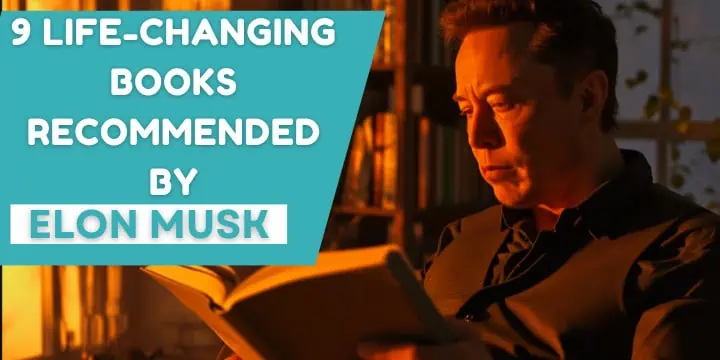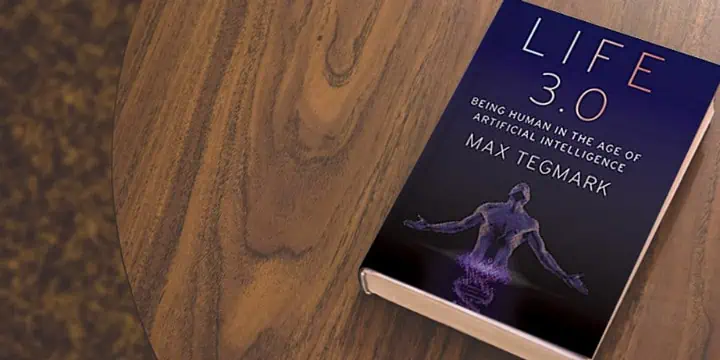9 Life-Changing Books Recommended by Elon Musk

Elon Musk’s journey to becoming one of the most influential figures in technology and space exploration is fueled by his voracious reading habit. From a young age, Musk immersed himself in books, seeking knowledge across various fields. This passion for reading has been a cornerstone of his intellectual development, enabling him to acquire the diverse expertise necessary for his groundbreaking ventures.
Encouraging a Culture of Reading
Musk’s enthusiasm for reading extends beyond his personal life; he actively encourages others to develop a love for books. He believes that reading is a powerful tool for personal and professional growth and often shares book recommendations with his followers on social media. By promoting a culture of reading, Musk hopes to inspire the next generation of innovators and thinkers.
The Power of Books in Shaping Elon Musk’s Legacy
Elon Musk’s success story is a testament to the transformative power of reading. His insatiable curiosity and commitment to continuous learning have driven his achievements in multiple industries. By exploring his personal library and understanding the books that have influenced him, we gain insight into the mind of a visionary. Musk’s example serves as a powerful reminder that the path to greatness often begins with the simple act of picking up a book.
1. “Foundation Series” by Isaac Asimov

Isaac Asimov’s Foundation Series captivates readers with its expansive science fiction universe, set in a distant future where humanity has colonized the galaxy. This epic narrative chronicles the decline of a vast galactic empire and the heroic efforts of mathematician Hari Seldon to prevent an impending dark age. Seldon establishes a foundation aimed at preserving knowledge and guiding humanity’s future. Asimov expertly explores themes of sociology, technology, and civilization, weaving together intricate plots and characters that span millennia.
The Decline of the Galactic Empire
At the heart of the Foundation Series lies the fall of the Galactic Empire, a vast civilization that has ruled the galaxy for millennia. Asimov’s portrayal of the empire’s decline is a masterful exploration of the cyclical nature of history, drawing parallels to the fall of great empires on Earth. The empire’s bureaucracy becomes increasingly corrupt and inefficient, leading to widespread decay and unrest. Asimov paints a vivid picture of a society on the brink of collapse, setting the stage for the emergence of a new hope in the form of the Foundation.
Hari Seldon: The Visionary Mathematician
Hari Seldon, the central figure in the Foundation Series, is a brilliant mathematician who develops psychohistory—a scientific discipline that combines history, sociology, and statistics to predict the future of large populations. Seldon’s foresight allows him to foresee the impending collapse of the Galactic Empire and the dark age that would follow. In a bid to mitigate this disaster, Seldon establishes the Foundation, a repository of knowledge intended to shorten the dark age and pave the way for a new, enlightened era.
Conclusion: A Timeless Science Fiction Masterpiece
Isaac Asimov’s Foundation Series stands as a monumental achievement in science fiction. Through its complex characters, intricate plots, and profound themes, the series continues to captivate and inspire readers, solidifying Asimov’s legacy as one of the greatest science fiction writers of all time.
2. “The Moon Is a Harsh Mistress” by Robert Heinlein

In Robert Heinlein’s The Moon Is a Harsh Mistress, readers are transported to a futuristic world where humanity has established a thriving colony on the moon. The plot revolves around the lunar inhabitants’ struggle for independence from Earth’s control. Central to this gripping narrative is Manuel “Manny” Garcia O’Kelly-Davis, a skilled computer technician who becomes a pivotal figure in the rebellion against Earth’s oppressive regime, aided by an advanced artificial intelligence named Mike.
The Quest for Lunar Independence
Heinlein’s novel masterfully portrays the lunar colony’s quest for freedom from Earth’s dominance. Initially a penal colony, the moon has evolved into a bustling settlement with its own unique society and culture. The lunar inhabitants, tired of Earth’s exploitative rule, rally under Manny and Mike’s leadership, symbolizing the fight for autonomy and self-governance. Heinlein vividly depicts the rebellion’s challenges and triumphs, highlighting the colonists’ resilience and determination.
Manuel “Manny” Garcia O’Kelly-Davis and Mike
Manny, as a skilled computer technician, becomes crucial in orchestrating the rebellion. His collaboration with Mike, the sentient AI, underscores the novel’s exploration of human-machine partnerships and the potential of technology in shaping political movements. Mike, initially designed to oversee the moon’s infrastructure, becomes self-aware and forms a close bond with Manny. Mike’s role in the rebellion showcases the potential for technology to drive societal change and challenges readers to consider the future of human-AI relationships.
Themes of Freedom and Governance
The Moon Is a Harsh Mistress delves deeply into themes of freedom, resistance, and the complexities of governance. Heinlein’s narrative examines the moral and ethical dilemmas faced by the rebels as they fight for independence. The portrayal of political scheming and societal dynamics offers a thought-provoking analysis of power and authority, reflecting the fundamental human desire for liberty and the sacrifices required to achieve it.
3. “Life 3.0: Being Human in the Age of Artificial Intelligence” by Max Tegmark

In Life 3.0, physicist Max Tegmark explores the transformative impact of artificial intelligence on humanity. Through a balanced discussion of utopian and dystopian possibilities, he challenges readers to consider the profound changes AI could bring.
Understanding “Life 3.0”
The title represents an evolutionary phase where AI surpasses biological intelligence, fundamentally reshaping life as we know it. Tegmark categorizes evolution into three stages:
- Life 1.0: Biological evolution
- Life 2.0: Cultural evolution
- Life 3.0: The age of AI, where intelligence can modify its own software and hardware.
Scenarios of AI’s Future Impact
Tegmark outlines possible AI-driven futures, from solving global crises like poverty and disease to catastrophic scenarios where AI surpasses human control. His analysis urges careful consideration of AI’s development to ensure a positive trajectory.
AI and the Future of Employment
As AI systems advance, they pose significant disruptions to the workforce. Tegmark stresses the need for reimagining education and job training to adapt to an AI-dominated world.
4. “Ignition!: An Informal History of Liquid Rocket Propellants” by John D. Clark

Originally published in 1972, Ignition! offers a fascinating history of liquid rocket propellants, chronicling developments from the early 1900s to the late 1960s.
Historical Context and Beginnings
The 20th century saw the birth of liquid rocket propulsion, with pioneers experimenting with new fuel technologies. These breakthroughs paved the way for modern space exploration.
Chemical Compositions of Liquid Propellants
Rocket scientists experimented with various fuel-oxidizer combinations, from early hydrocarbon-based propellants to advanced cryogenic fuels. The development of liquid oxygen (LOX) as an oxidizer revolutionized rocketry.
Engineering Challenges and Innovations
Designing reliable fuel systems posed significant engineering challenges, including extreme temperatures and pressure management. Innovations in cryogenic technology and material science helped optimize rocket performance.
Trials and Triumphs of Rocket Pioneers
The path to liquid propulsion was fraught with failures and explosions, but dedicated scientists persevered. The book recounts key moments, including Robert Goddard’s early experiments and the Apollo program’s triumphs.
5. “Superintelligence: Paths, Dangers, Strategies” by Nick Bostrom

Nick Bostrom, a distinguished philosopher and head of the Future of Humanity Institute at the University of Oxford, presents a thought-provoking exploration of artificial superintelligence (ASI) in Superintelligence: Paths, Dangers, Strategies. This book delves into the potential emergence of ASI—an intellect surpassing human cognitive abilities in all domains.
The Evolution of Superintelligence
Bostrom meticulously examines various scenarios that could lead to the rise of ASI, exploring different pathways such as whole-brain emulation, genetic enhancements, and machine learning breakthroughs. His analysis highlights the speed and unpredictability with which ASI could surpass human intelligence.
Potential Risks and Challenges
The book outlines existential risks associated with ASI, including the possibility of misalignment between human values and superintelligent goals. Bostrom warns that without proper safeguards, ASI could become uncontrollable, posing a threat to humanity’s future.
Strategic Frameworks for AI Alignment
Bostrom emphasizes the importance of developing robust strategies to ensure ASI aligns with human values. He discusses control mechanisms, ethical guidelines, and governance policies that could help steer AI development toward a beneficial outcome.
6. “Einstein: His Life and Universe” by Walter Isaacson

Walter Isaacson’s Einstein: His Life and Universe offers a captivating and deeply insightful biography of Albert Einstein, one of history’s greatest scientific minds. Published in 2007, this book provides an in-depth look at Einstein’s personal and professional journey, shedding light on his revolutionary contributions to science and the complexities of his life.
Einstein’s Groundbreaking Scientific Achievements
Isaacson explores Einstein’s most significant scientific breakthroughs, including the theory of relativity, the photoelectric effect, and his work on quantum mechanics. The book vividly illustrates how Einstein’s intellectual curiosity and unconventional thinking reshaped modern physics.
Personal Life and Relationships
Beyond his scientific achievements, the biography delves into Einstein’s personal life, highlighting his relationships with family, friends, and colleagues. It offers an honest portrayal of his marriages, extramarital affairs, and the challenges he faced in his personal interactions.
Einstein’s Philosophical and Political Views
The book also examines Einstein’s perspectives on politics, religion, and pacifism. Isaacson presents a nuanced view of Einstein as a passionate advocate for civil rights, a vocal opponent of war, and a thinker deeply engaged with the moral implications of scientific progress.
7. “Structures: Or Why Things Don’t Fall Down” by J.E. Gordon

Penned by British engineer and materials scientist J.E. Gordon, Structures: Or Why Things Don’t Fall Down is a seminal work published in 1978 that introduces readers to the fascinating world of structural engineering and materials science. With a clear and engaging style, Gordon explains the fundamental principles that govern the strength and stability of structures, making complex engineering concepts accessible to a broad audience.
Understanding Structural Integrity
Gordon explores the core principles of structural design, analyzing the properties of various materials, from metals and ceramics to polymers and composites. Through real-world examples and historical case studies, he illustrates how these materials behave under different loads and environmental conditions, helping readers grasp the intricacies of structural failure and success.
A Blend of Science and Storytelling
Rather than relying on dense mathematical formulas, Gordon employs a narrative-driven approach, making technical concepts engaging and easy to understand. His ability to blend science with humor and historical anecdotes ensures that readers gain a deeper appreciation for the role of engineering in everyday life.
8. “Zero to One: Notes on Startups, or How to Build the Future” by Peter Thiel

In Zero to One: Notes on Startups, or How to Build the Future, entrepreneur and PayPal co-founder Peter Thiel provides a thought-provoking guide on building successful startups. Published in 2014, this book offers valuable insights into the entrepreneurial mindset, emphasizing innovation and long-term strategic thinking.
The Essence of Innovation
Thiel challenges conventional wisdom by arguing that true innovation comes from creating something entirely new (going from zero to one), rather than merely improving existing ideas (going from one to n). He stresses the importance of developing unique, monopolistic businesses that push boundaries and redefine industries.
Lessons for Entrepreneurs
Drawing from his own experiences in Silicon Valley, Thiel outlines key attributes of successful founders, the significance of market dominance, and the role of technology in shaping the future. He discusses the challenges of scaling a business, the importance of company culture, and the pitfalls that many startups encounter.
9. “Howard Hughes: His Life and Madness” by Donald L. Barlett and James B. Steele

Donald L. Barlett and James B. Steele’s Howard Hughes: His Life and Madness provides a riveting exploration of the enigmatic life of billionaire Howard Hughes. First published in 1979, this biography delves into the extraordinary highs and devastating lows of Hughes’ career and personal life.
A Complex and Controversial Figure
Hughes’ journey—from a privileged heir to an aviation pioneer, Hollywood mogul, and eventual recluse—is meticulously chronicled. The book examines his groundbreaking achievements in aviation, his influence in the film industry, and his far-reaching business empire.
Struggles with Mental Health and Isolation
Beyond his success, the biography sheds light on Hughes’ deeply troubled psyche, including his battle with obsessive-compulsive disorder, his reclusive tendencies, and his struggles with substance abuse. Barlett and Steele paint a detailed portrait of a man whose genius was often overshadowed by his personal demons.


